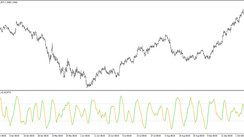Algorithmic trading is a type of trading that uses computer algorithms to generate and execute trading signals. These algorithms are typically based on mathematical and statistical models that are designed to identify trading opportunities and minimize risk.
Algorithmic trading is becoming increasingly popular, as it offers a number of advantages over traditional forms of trading. These advantages include:
Speed: Algorithmic traders can execute trades much faster than human traders, which can give them an edge in the market.
Precision: Algorithmic trading can be more precise than human trading, as the algorithms are not subject to human emotion or error.
Automation: Algorithmic trading can be automated, which frees up human traders to focus on other tasks.
How it works
Algorithmic trading typically involves the following steps:
Data collection: The first step is to collect data on the market that the algorithm will be trading. This data can include historical price data, news headlines, and technical indicators.
Modeling: The next step is to develop a model that will be used to generate trading signals. This model will typically be based on mathematical and statistical principles.
Execution: Once the model has been developed, it is used to generate trading signals. These signals are then sent to a trading platform, which executes the trades.
Is it profitable or risky?
Algorithmic trading can be both profitable and risky. The profitability of algorithmic trading depends on a number of factors, including the accuracy of the model, the volatility of the market, and the fees charged by the trading platform.
The risk of algorithmic trading is also high. This is because algorithmic traders are often trading against other algorithmic traders, who may have access to more sophisticated algorithms or more data. Additionally, algorithmic trading can be susceptible to errors in the model or the trading platform.
How to identify Trading Algorithms
There are a number of ways to identify algorithms in the market. One way is to look for patterns in the order flow. For example, if there are a large number of orders being placed at the same price, this could be a sign that an algorithm is trading.
Another way to identify algorithms is to look for the use of technical indicators. Many algorithms use technical indicators to generate trading signals. For example, an algorithm might buy a stock when the moving average crosses above the signal line.
Experts are divided on the future of algorithmic trading. Some experts believe that algorithmic trading will become increasingly dominant in the market, as it offers a number of advantages over traditional forms of trading. Others believe that algorithmic trading will eventually reach a point of diminishing returns, as the market becomes saturated with algorithmic traders.
When it should be used
Algorithmic trading can be a useful tool for both individual and institutional investors. However, it is important to use algorithmic trading only when it is appropriate. For example, algorithmic trading may not be suitable for investors who are looking for a hands-on approach to trading. Additionally, algorithmic trading should only be used by investors who understand the risks involved.
Conclusion
Algorithmic trading is a complex topic, but it is an important one to understand for investors who are considering using this type of trading. By understanding how algorithmic trading works, investors can make informed decisions about whether or not to use this type of trading.





